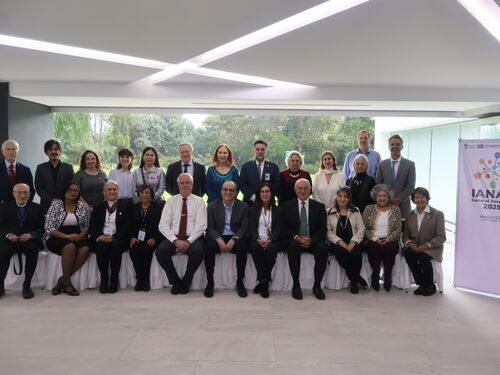‘A Marathon, Not a Sprint’ — How Can Cities Reduce Greenhouse Gas Emissions and Also Improve Mobility?
Feature Story
By Josh Blatt
Last update August 22, 2022
The U.S. transportation sector accounts for over a quarter of the nation’s greenhouse gas emissions, more than any other sector, according to the U.S. Environmental Protection Agency. Single-occupancy vehicles produce much of it, with each gallon of gasoline burned emitting nearly 20 pounds of CO2.
With transportation being a crucial part of the economy and everyday life, municipalities and transit agencies across the country are taking on the challenges of lowering emissions, partly by enabling people to get around without a car. Doing this while navigating rapidly changing transportation patterns — spurred in part by the COVID-19 pandemic — and supporting improved mobility for all residents presents further challenges, as well as opportunities, for transportation planners. These were some of the topics discussed during a recent webinar on urban transportation, part of the National Academies’ Climate Conversations series.
“Our collective future really does seem at this point very much to depend on the choices that we make over the next couple of years,” said Jon Carnegie, executive director of the Alan M. Voorhees Transportation Center at Rutgers University and moderator of the webinar. “The opportunity is there to chart a new course, or perhaps to carry on business as usual.” Car-centric cities like Houston and Los Angeles, two places where transportation accounts for upward of 40% of emissions, face especially stark environmental choices.
Transportation planners in Los Angeles have been empowered to chart a resilient new course by the passage of a public referendum in 2016, allowing the city to commit $140 billion over 40 years to transportation improvements that will help it meet its emission reduction goals. The funds are going toward new and expanded subway lines, bus rapid transit, bikeways, streetcars, a metro connection to LAX airport, and other capital projects that move people and goods around the second largest metropolitan region in the country.
“What we’ve done is pretty dramatic,” said Cris Liban, chief sustainability officer for the Los Angeles County Metropolitan Transportation Authority (LA Metro). The city is transitioning its extensive bus fleet — which is already running off of a mix of electricity and natural gas, some of it sourced from methane capture facilities — to be 100% electric by 2030, ahead of state requirements. LA Metro’s suite of multimodal solutions meant to help people get around while logging fewer miles in a car also includes investments in repairing sidewalks and building out bike lanes to enable active transportation; an expanded bicycle-sharing system; and installation of electric vehicle chargers at its park-and-ride lots.
“Using the transportation system as a gateway to not only uplift the economic conditions of the people of Los Angeles but also reduce environmental impacts,” according to Liban, is a top concern for LA Metro. He views this holistic approach as being part of a larger context of working to create an environment where everyone benefits.
That approach has allowed the city to address long-standing problems with creative solutions. “We never thought before that transit dollars could fund broadband expansion and reinforce resiliency,” said Liban, touting a South Bay area pilot project to install fiber optic cable.
The improvements enable better real-time traffic monitoring and management, and provide a base for future vehicle-to-vehicle communications, while extra capacity can be made available to the public to better enable and encourage teleworking, which has the effect of reducing emissions through “trips not taken,” according to the South Bay Cities Council of Governments.
Efforts to improve transit and lower emissions in Los Angeles have inspired other car-centric cities. “We looked to LA for so many things that we did,” said Priya Zachariah, chief resilience and sustainability officer for the city of Houston.
“The MetroNext Moving Forward Plan, which put $7.5 billion in investments out on the referendum, and which passed with such an encouraging majority … will mean transformational change for the Houston region,” said Zachariah. The passage of Houston’s plan has initiated a positive shift in thinking about transit in the region — the fifth largest metro area in the U.S. Plans for the funds range from better shelters at bus stops and accessibility upgrades to the introduction of circulator buses in neighborhoods with transit-dependent riders and a massive expansion in regional bus rapid transit.
Transit ridership, however, plummeted during the pandemic, especially with work-based commuters, which has somewhat changed the city’s calculus on its strategic investments, according to Zachariah. The rapid shifts in ridership have underscored the need for agility in data collection, transit modeling, and incorporation of both into decision-making processes.
“People still need mobility, access, and connectivity to opportunity … grocery stores, schools, recreation, health care, educational institutions,” said Zachariah. A wide range of transit investments, including better multimodal coverage, connection to bicycle networks, and sidewalk accessibility, will help change the personal decisions of individuals and “make it make sense for them to rely on the transit system as a viable alternative to being in a single-occupancy vehicle.”
These massive transit investments will have dramatic impacts, as will the projects enabled by federal infrastructure dollars, but Zachariah believes much more must be done, and done more consistently, on resiliency to the impacts of climate change. Municipal, county, state, and federal levels need to embed the concept of resilience in multimodal public transit, which by its very nature helps make communities and regions more resilient. “It’s a matter of moving the needle in a way that is very impactful, but it takes consistency and endurance — it’s like a marathon, not a sprint.”



